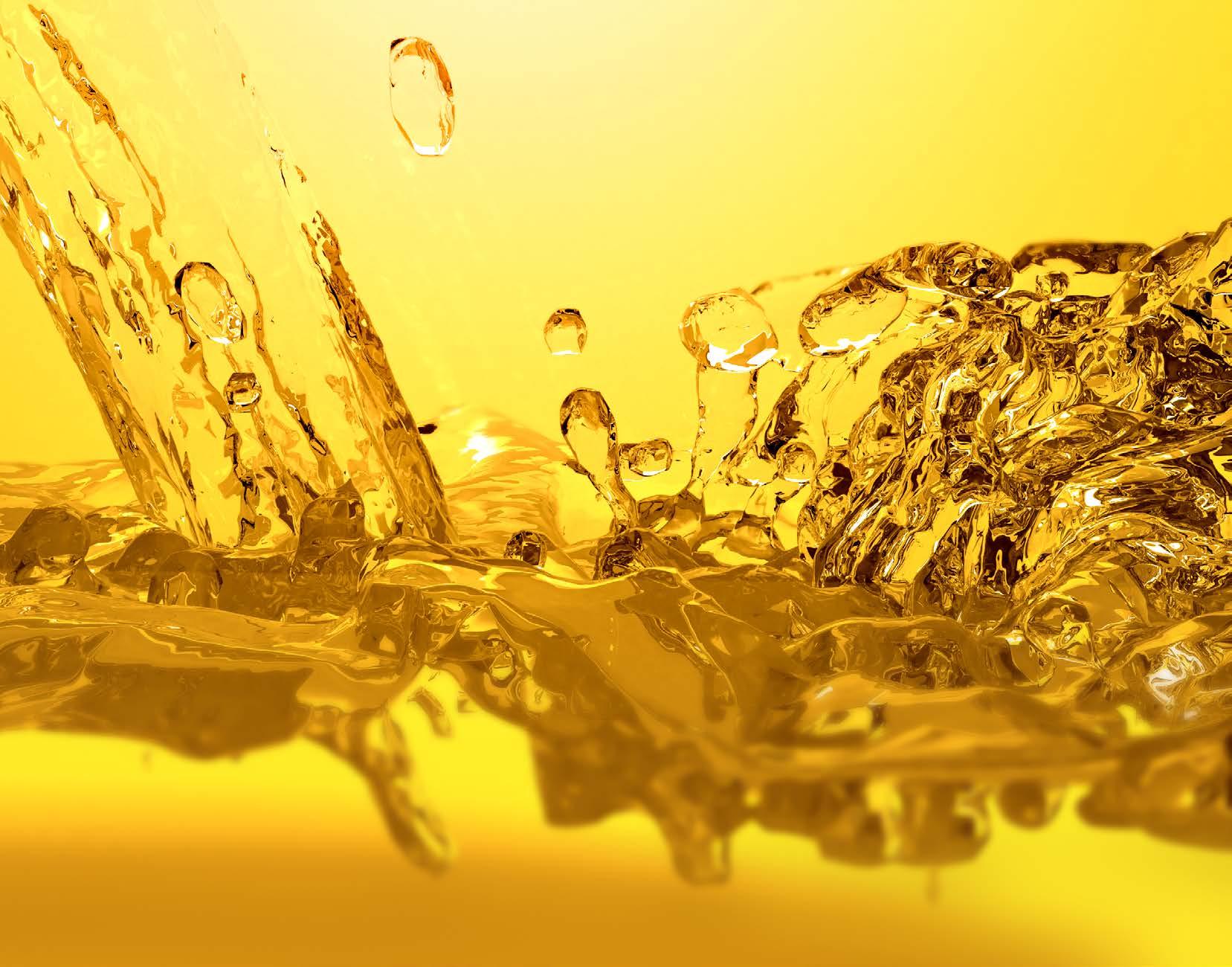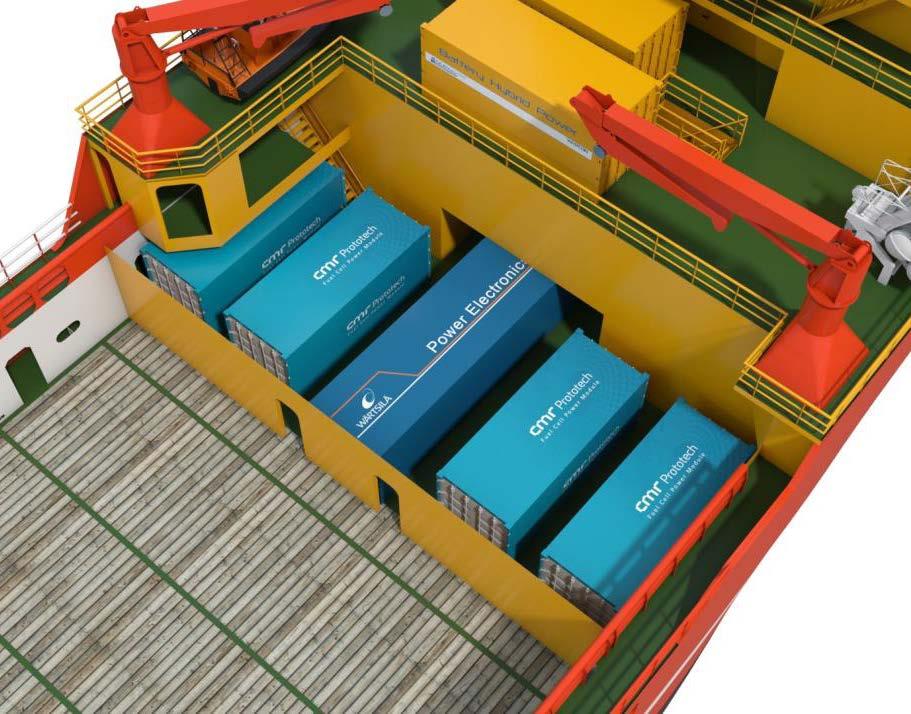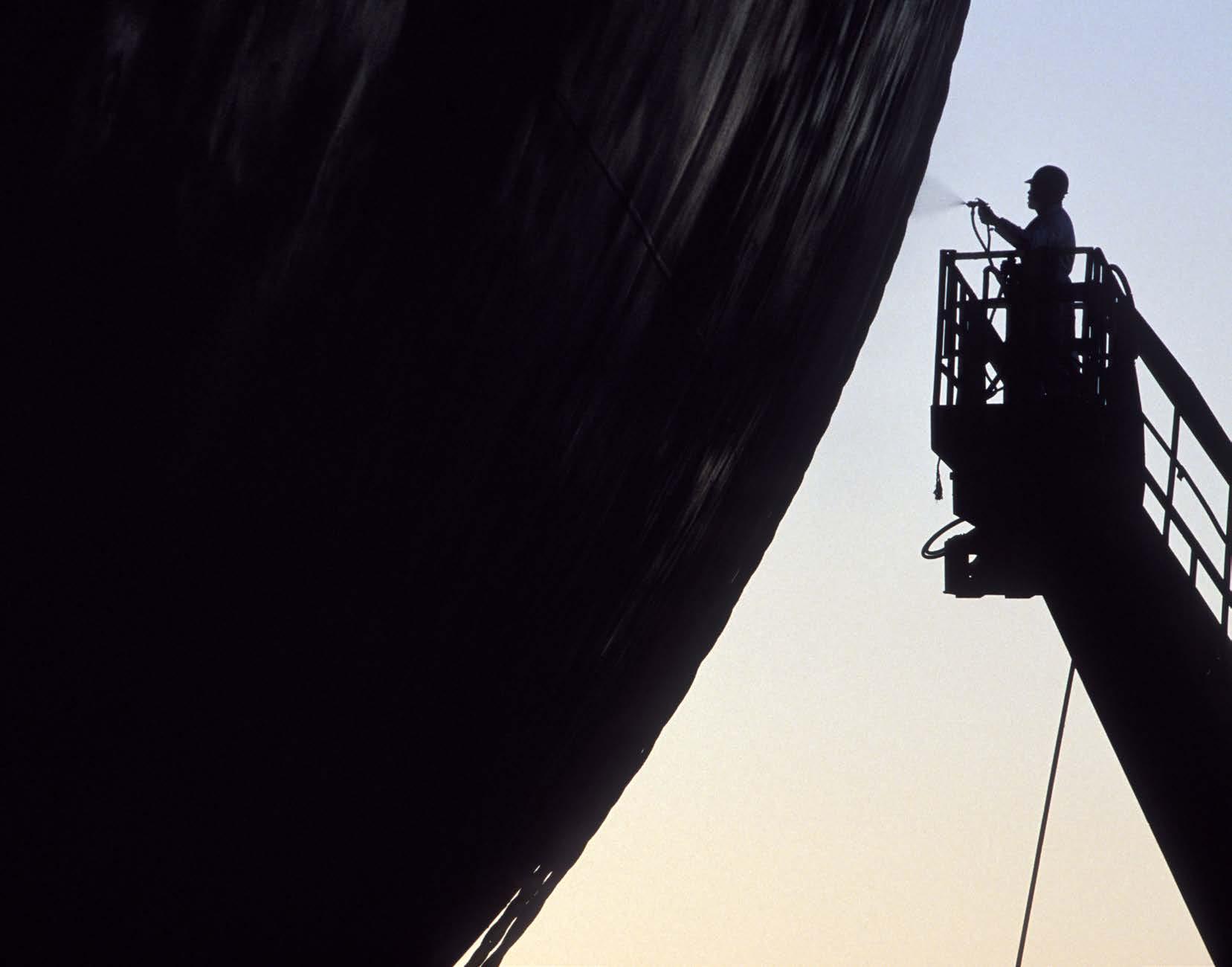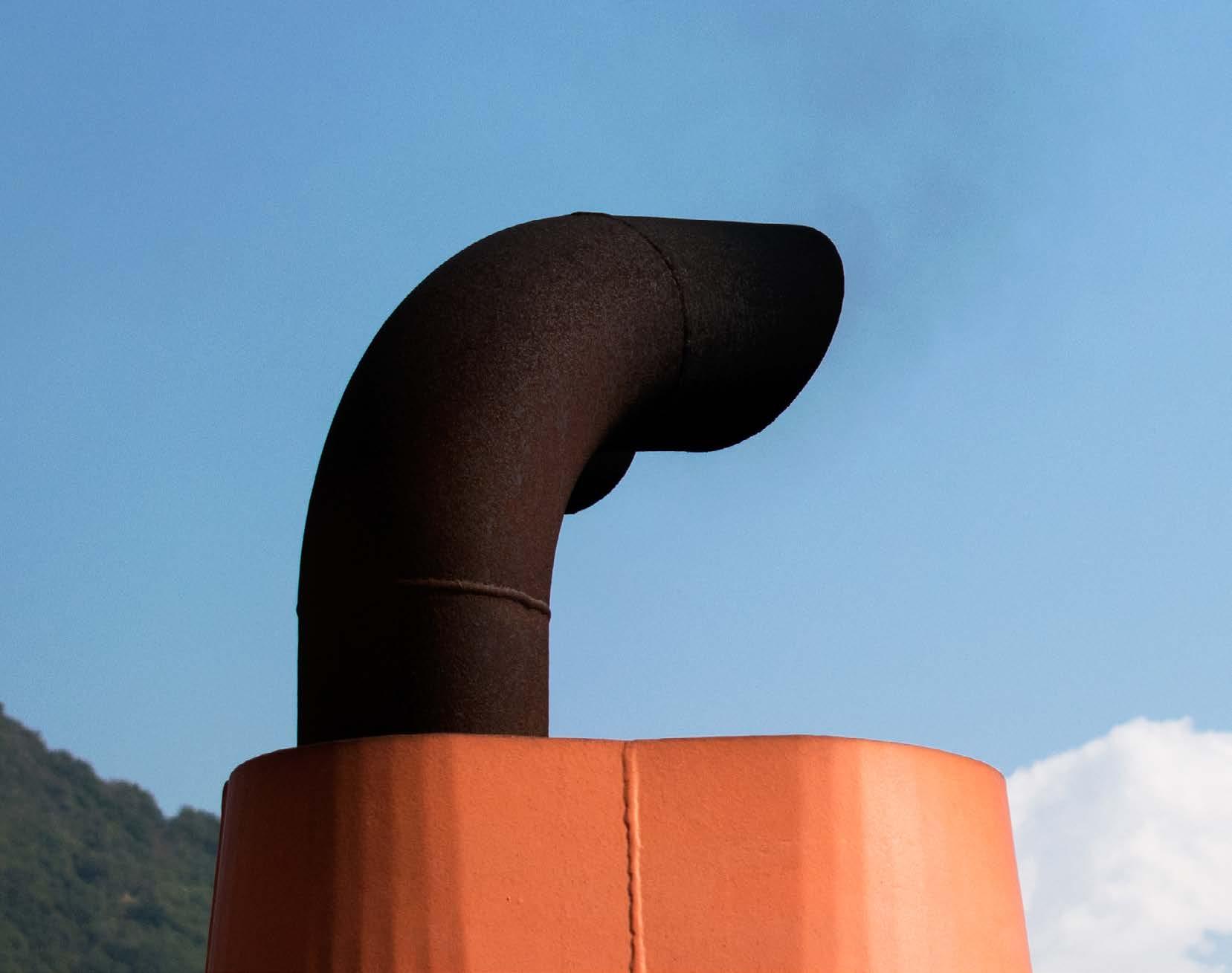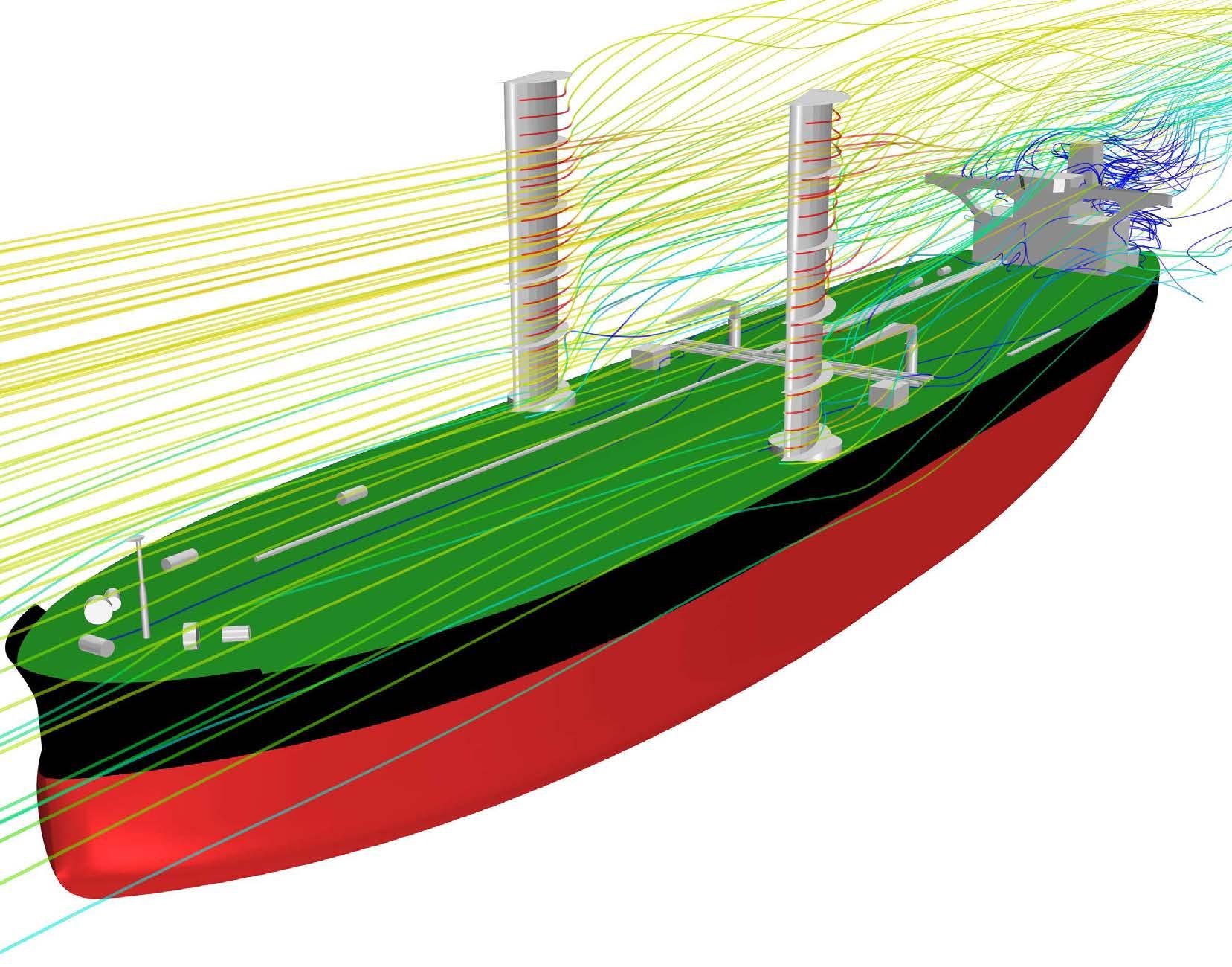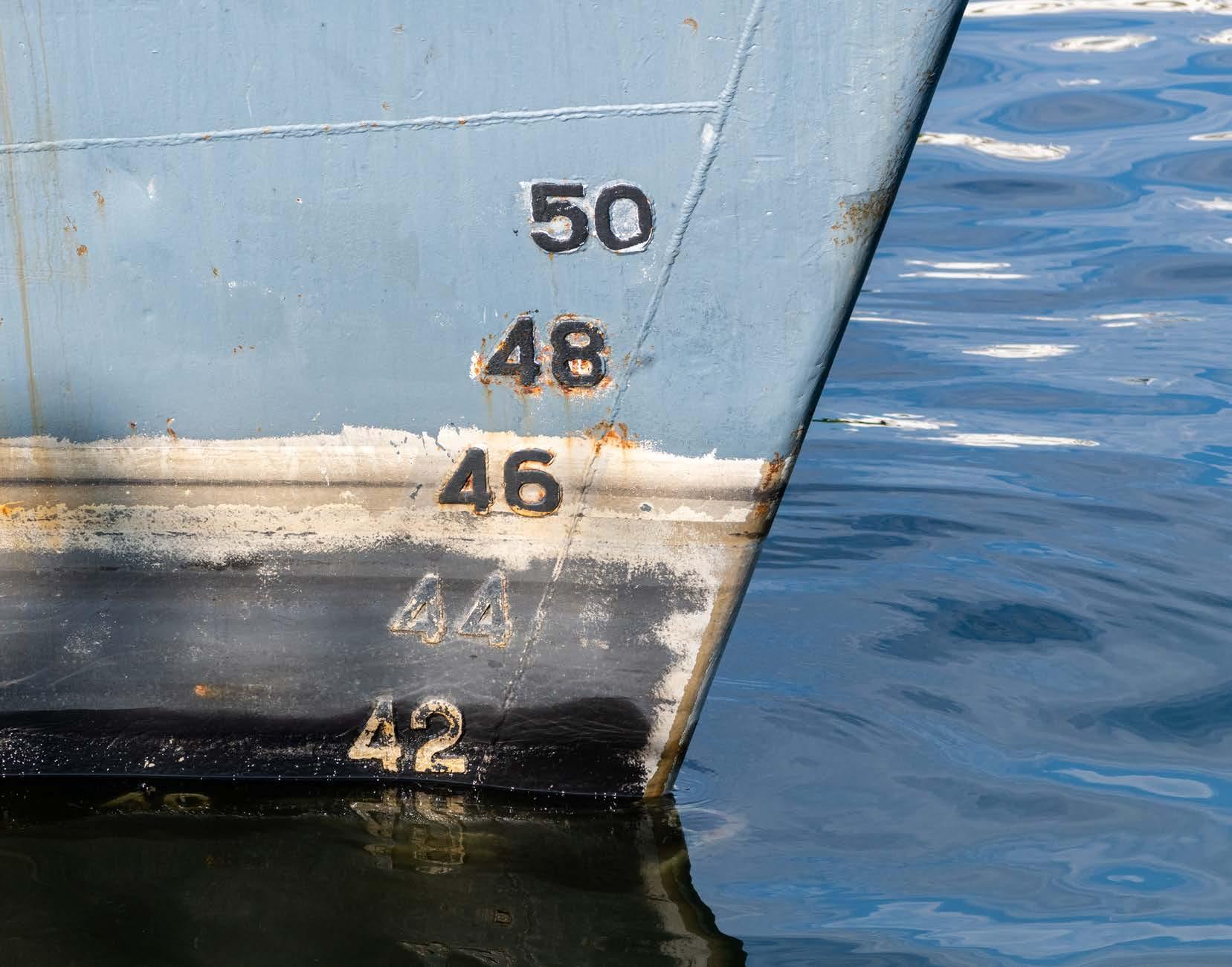
6 minute read
Titan LNG commercial director Marine Michael Schaap on the burgeoning LNG market
from CSI Spring 2021
by Maritime-AMC
Clean Shipping International talks to Titan LNG’s Commercial Director Marine, Michael Schaap, about the burgeoning LNG market
Titan LNG’s new bunker barges ‘FlexFueller 001’ and ‘FlexFueller 002’ seen at Antwerp
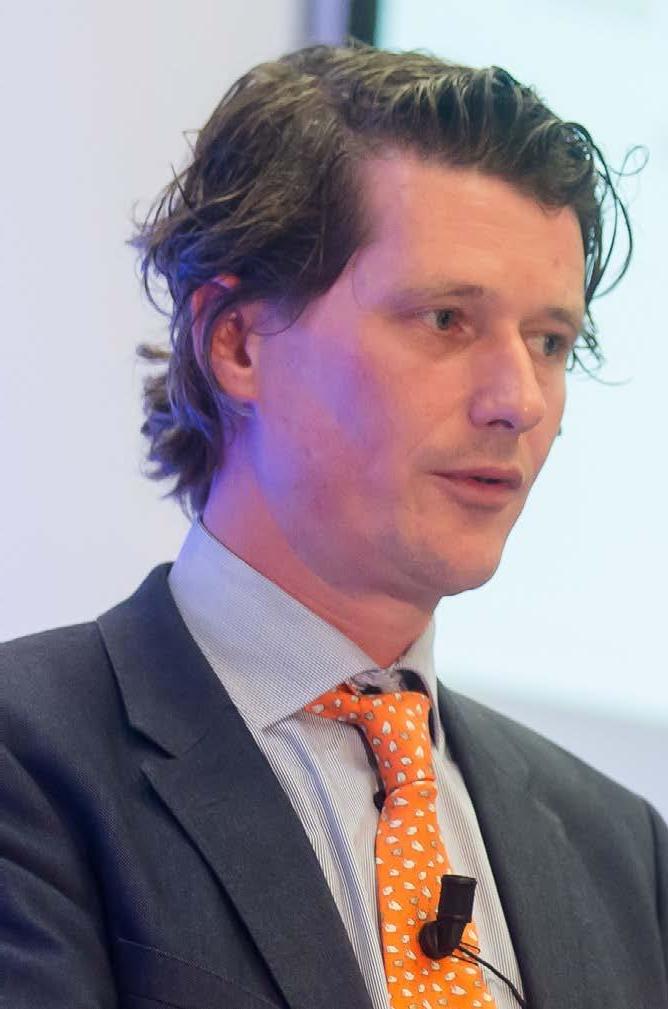
Michael Schaap Commercial Director Marine, Titan LNG
A BRIGHT FUTURE AHEAD FOR LNG
Today, there is more LNG bunkering infrastructure in place than demand, according to Michael Schaap, Titan LNG’s commercial director marine. “The chicken and egg situation has been fixed,” he asserts.
This follows years of arguments and counter arguments over the use of liquefied natural gas (LNG) as a fuel on board ship, mainly concerning its availability worldwide.
He describes the orderbook for LNG bunkering vessels (LNGBV) as spectacular, saying that it was a clear demonstration of market interest in natural gas as a fuel.
Another positive was the variety of infrastructure in place or being planned to suit different ship type and sizes, operating on different trades — deepsea, coastal and inland. This infrastructure now includes road trucks and barges, as well as land storage facilities.
Titan LNG started its LNG bunkering operations with trucks and has now taken delivery of a 1,500m3 barge with another two to come, the latter being a much larger 8,000m3 “mother ship”, which the company plans to order this year.
Schaap thinks that with LNG bunkering achieving greater maturity, the authorities worldwide are generally more comfortable with the operations.
Although there are still relatively few suppliers, there are others entering the market, which creates healthy competition, giving customers more of a choice, he says.
Titan LNG operated its first barge, FlexFueler 001 for around 18 months in the Antwerp/Rotterdam/Amsterdam (ARA) range, being based at a dedicated LNG transfer jetty at Amsterdam. The ARA range is interconnected via inland waterways. meaning that each port has easy access to barge traffic.
Also today, more terminals are comfortable with LNG bunkering vessels lying alongside, while working cargo. Before, a vessel taking on LNG had to switch to a layby with the added expense of the pilots and tugs involved. For ARA operations, Titan mainly receives the LNG from Rotterdam’s GATE receiving terminal or Zeebrugge either by truck or transferred from small-scale LNG carriers.
The second barge, FlexFueler 002, was due to be delivered in February this year and she will be operated by Fluxys in Antwerp at another dedicated quay at which a truck-to-
ship transfer system operates, while Titan has an inland waterway barge bunkering operation.
The two companies agreed to co-operate in early 2019 to build the bunker barge and she was delivered from Koolman Marine. Before her delivery, she embarked on trials and crew training.
Titan has already bunkered several vessels in Antwerp, with the FlexFueler 001 thus gaining experience in the large Belgian port in co-operation with the port authority. Schaap described the FlexFuelers as flexible in design and versatile assets.
Due to this flexibility, the Antwerpbased FlexFueler will be able to carry liquefied biogas from organic waste or liquefied synthetic methane from green hydrogen and captured CO2 and supply the fuel to LNG-powered vessels in the future.
Schaap says that Titan LNG was confident in making available liquefied biogas (from organic waste) or liquefied synthetic methane (from green hydrogen and captured CO2) to LNGpowered vessels soon after starting operations with the second barge in February.
LNG, combined with BLNG and later synthetic liquefied gas (SLG), offers a credible and cost-competitive path to de-carbonisation whilst immediately improving local air quality. The company is also looking at alternatives, such as hydrogen, according to Schaap.
The FlexFuelers are fitted with four tanks with separate pumping systems, so certain tanks can be allocated to hold biofuels under European inland waterway rules.
Late last year, Titan LNG finalised €11m funding from the European Union’s Connecting Europe Facility (CEF) to expand a bio-LNG bunkering supply chain under the banner of the company’s Bio2Bunker project.
The project’s primary aim is to introduce another three bunker barges to be based at Zeebrugge, Rotterdam and in Luebeck, Germany. The Belgian and German barges will be similar to the two FlexFuelers.
However, for the ARA range, Titan LNG will build an 8,000m3 “mother ship” — Titan Hyperion — that will supply the smaller barges.
Schaap explains that Titan is looking to take delivery of Titan Hyperion at the end of 2023. The demand element is being finalised and an order is expected to be placed by this summer.
He also comments on the recent growth in interest for LNG-powered containerships, saying that this was a separate market as far as bunkering is concerned.
For example, the 20,000teu-plus vessels have a capacity to hold around 18,000m3 of LNG each, which would necessitate at least two bunker stems, although larger barges are under construction for other suppliers.
An LNG-powered car carrier is fitted with bunker tanks to hold around 3,000m3, which Schaap describes as a “more comfortable challenge”.
Most of Titan’s clients are European based, but the company is keen to forge alliances worldwide, illustrated by last November’s joint venture with Malaysia’s Petronas to bunker the Siemowned, LNG-powered car carrier Siem Aristotle at Pasir Gudang.
This followed 2019’s Singapore and Indonesia operations to service Heerema’s self-propelled LNGpowered crane barge Sleipner — the world’s largest.
For the Malaysian bunker operation, the LNG was purchased by Titan and transferred to the car carrier using Petronas Marine’s chartered smallscale LNG carrier/bunkering vessel, Avenir Advantage.
She delivered around 3,000m3 of LNG to the Siem Aristotle. Apart from bunker deliveries, she can also be used as a feeder LNG carrier in and around Malaysia, calling at ports such as the Sungai Udang regasification terminal, Pengerang and Johor.
This is not the first time that Titan LNG bunkered a Siem car carrier with LNG.
In August last year, the company’s chartered 5,000m3-capacity Engie Zeebrugge delivered just over 1,000 tonnes of LNG to the Siem Confucius at Emden in Germany. Titan LNG now operates the bunkering vessel on a long term charter basis.
She was described as a “step up” in size, before the delivery of the larger Titan Hyperion.
The car carrier is chartered to Volkswagen and Siem claimed to be the first company to introduce LNG powered vessels in transatlantic trades.
Following the bunkering operation in Emden, the Engie Zeebrugge delivered 150 tonnes to the DEME-owned dredger Scheldt River at Brunsbuettel. The dredger is one of Titan LNG’s regular customers.
Titan LNG has agreed to charter the 5,200m3-capacity Green Zeebrugge, ex Engie Zeebrugge, from NYK, which had become the vessel’s sole owner.
The charter lasts for several years and commenced in February. She will be used to supply LNG to larger LNGfuelled vessels in the ARA region.
Schaap says: “January has proved to be exceptionally busy, underlining the timeliness of our decision to secure this additional capacity.” Titan LNG carried out seven LNG operations during one weekend using Green Zeebrugge, three of which were to large crude shuttle tankers from Equinor, a term contract partner of Titan’s.
He also says that operational standards must remain high in LNG bunkering and platforms, such as the Society for Gas as a Marine Fuel (SGMF) and Sea/LNG, are key to raising standards.
In addition, the International Code of Safety for Ships using Gases or other low-flashpoint Fuels (IGF Code) must be included in a company’s Safety Management System (SMS). Other areas, such as the flexible hose guidelines, should also be adhered to.
Titan LNG will also offer observers, such as LNG-powered vessels’ crew to gain practical experience while undertaking an LNG bunker stem. Once they have witnessed the operation, they will receive a letter from Titan confirming their presence at the bunkering.
He says that Titan LNG has ambitious expansion plans to set up in other locations and taking on long term commitments.
Finally, LNG also significantly reduces quantity and quality bunker disputes, common with normal fossil fuel operations, he says, as the loading and discharge is measured using mass flow meters fitted on the barges, giving a closed system, which cannot be tampered with.

